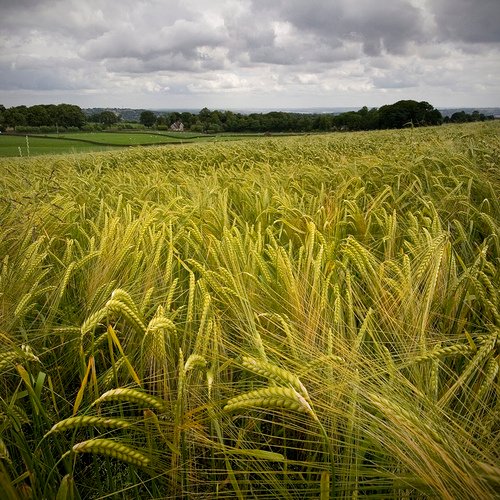Great Grains for a Great Beer
There are a lot of great grains to use for brewing beer. Some favorites include wheat, barley, rye, corn, and rice. Each has its own unique flavor and can contribute different nuances to your beer. Experiment with different combinations to find what you like the best! One of the great reasons for learning to brew your own beer is to learn more about the various grains and ingredients that make one beer better than another. When you first start your hobby of home brewing, you will no doubt get connected to a local club or association of home brewers. They can help you learn the lingo and how to tell what the best grains are to use in your beer. But before you go to the first meeting, it might speed things up if you knew the basics.
The use of malts is at the heart of how grain contributes to great beer. The difference between a light beer that doesn’t have a heavy malt taste and one that virtually tastes like a loaf of bread all goes back to what malts you pick and the process that is used during the malting and brewing of your beer. There are actually a wide variety of different grains that people commonly use when brewing their own beer, and you may have to take some time to brew up a few batches using different grains to see which ones capture what to you is the perfect beer taste that will make your homemade beer unique. But understanding how malting works is a good first step.
As a home brewing enthusiast, you will probably not actually take grain through the malting process yourself. But you should become familiar with how malting works and why there is so much variety in the outcome of the malting process. In that way, you can use that knowledge when buying the malts for your beer, so you can get a malt that will give you the flavor, color, and intensity of beer that you are looking for.
The malting process starts with the grain to be used. The most common grains are barley, wheat, or rye, but others can be used from time to time. The grain is used from the seed form and is steeped and germinated, which gets the active part of the malting and brewing process underway. Germination, which from your high school science class you know is what happens when a seed sprouts out to become a plant, releases the stored energy of the seed that was put there to jump-start the growth process. We are going to use that energy and convert it into malt mash that you can use to brew your beer.
What happens during the germination process of those grains is that the stored energy in the seed is changed as it is released. When the starches in the seeds change into sugars by the enzymes that are an active part of the germination process, those sugars give us one of the core ingredients for great beer. It is at that exact moment that the germination process is suspended using kilns to dry the grains, and all of that good sugar and enzymes that became active remain in the malt for use during the brewing process.
Obviously, this description of the basic malting process is simplified, but for our purposes, it gives you a background into what happens before you buy the malts you will use in your home-brewed beer. But based on this description, you can go on to get a feel for the wide variety of malt types. The more you know about malt, the better informed you will be about what malts you wish to use when you brew your beer. And those decisions will have a big effect on the taste of your beer. So for great tasting beer, use great malts, and knowing one malt from the next is the key to knowing which to use for the best homemade beer possible from your home brewing efforts.
Brewing malt is one of the most important aspects of brewing your own beer.
There are a wide variety of malts available that can be used in a homebrewer’s arsenal, and the type of malt you choose can have a significant impact on the flavor and aroma of your beer. There are six main types of malts: cara- Malt, crystal malts, chocolate malts, roasted barley malts (including black & brown), flaked grains, and dextrine Malts. Each has its own unique set of properties that can contribute to great taste.


Recent Comments